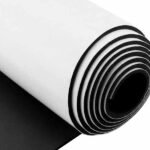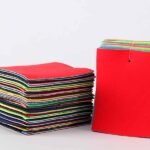Neoprene waders are an essential piece of gear for anglers, hunters, and anyone who spends time in wet or cold environments. Made from durable, water-resistant neoprene, these waders are designed to keep you dry and warm while providing flexibility for various outdoor activities. However, to ensure they last for many years and continue to perform at their best, proper care and maintenance are crucial. In this article, we will cover everything you need to know about caring for your neoprene waders, from cleaning to storage, so you can maximize their lifespan and functionality.
Neoprene waders require regular cleaning, drying, and careful storage to maintain their flexibility and waterproofing. With proper care, neoprene waders can serve you reliably for many seasons, providing comfort and durability in the harshest conditions.
Now that we understand why it’s important to care for your neoprene waders, let’s dive into the specifics of how to maintain them.
What Makes Neoprene an Ideal Material for Waders?
Neoprene is a synthetic rubber material that is widely used for making wetsuits, waders, and other protective clothing due to its excellent properties, including its ability to insulate and resist water. When it comes to waders, neoprene is the material of choice because it combines flexibility, durability, and thermal insulation. Here’s why neoprene is ideal for waders:
Neoprene’s ability to insulate, its water-resistant properties, and its flexibility make it an ideal material for waders. The material is also resistant to many environmental factors, including UV rays, which contributes to the longevity of the product.
Neoprene waders are designed to keep you dry and warm, even in cold and wet conditions. The closed-cell structure of neoprene traps air, which acts as an insulating barrier between your body and the water, helping to regulate your body temperature. Additionally, neoprene is highly flexible, allowing for freedom of movement when walking, bending, or kneeling. These characteristics make neoprene waders perfect for outdoor activities such as fishing, hunting, and boating.
How Do You Clean Neoprene Waders?
Proper cleaning is essential to maintaining the integrity of your neoprene waders. After each use, especially if you’ve been in saltwater, mud, or other harsh environments, cleaning your waders is crucial to prevent damage, odors, and degradation of the material. Here’s how you can clean your neoprene waders effectively:
To clean neoprene waders, rinse them with fresh water after every use, especially if you’ve been in saltwater or muddy conditions. Use a mild soap or neoprene-friendly cleaner for deeper cleans, and avoid harsh detergents or bleach.
-
Rinse Thoroughly:
After each use, rinse your neoprene waders with fresh water to remove salt, dirt, and other debris. This will help prevent buildup that can cause wear and tear over time. -
Use Mild Soap:
For a deeper clean, use a mild soap or neoprene cleaner. Avoid using harsh detergents or bleach, as they can damage the material and cause it to lose its flexibility. Gently scrub the interior and exterior of the waders with a soft cloth or sponge. -
Dry Properly:
After cleaning, rinse again with fresh water and hang the waders to dry in a well-ventilated area. Avoid wringing out the neoprene, as this can stretch and deform the material.
How to Properly Store Neoprene Waders?
When not in use, it’s important to store your neoprene waders properly to ensure they remain in good condition. Storing them incorrectly can lead to premature wear, cracks, and deformation. Here’s how to store your waders to maximize their lifespan:
To store neoprene waders, hang them up in a cool, dry place away from direct sunlight. Avoid folding them for long-term storage, as this can cause creases or damage to the neoprene.
-
Hang with Care:
Always hang your waders by the boots or shoulder straps to avoid stress on the material. Using a wide, padded hanger can help distribute the weight evenly, preventing the waders from getting misshapen. -
Avoid Direct Sunlight and Heat:
Store your waders in a cool, dry place, away from direct sunlight or heat sources. UV rays can cause neoprene to degrade, and excessive heat can cause the material to crack or lose its elasticity. -
Don’t Fold or Compress:
Avoid folding or compressing your waders for long periods. This can lead to permanent creases or stress marks that weaken the material. Instead, hang them up or lay them flat in a dry, ventilated area.
How Long Will Neoprene Waders Last?
The lifespan of neoprene waders depends on several factors, including frequency of use, how well they are cared for, and the quality of the material. With proper care, neoprene waders can last for several seasons, but neglecting maintenance can shorten their lifespan significantly. Here’s what to consider when determining how long your waders will last:
With proper care, neoprene waders can last between 3 to 5 years, depending on the conditions in which they are used and how often they are cleaned and maintained.
-
Quality of Neoprene:
Higher-quality neoprene waders are more durable and resistant to wear and tear. Choose waders made from thicker, high-quality neoprene for a longer-lasting product. -
Frequency of Use:
The more frequently you use your waders, the more wear they will experience. However, regular cleaning and proper care can extend their lifespan. -
Maintenance:
Proper cleaning, drying, and storage are crucial for prolonging the life of your waders. Neglecting any part of the care process can lead to faster deterioration.
How Can You Prevent Cracks and Damage While Drying Neoprene Waders?
Drying neoprene waders improperly can lead to cracks, creases, and material degradation. Here’s how to ensure that your waders dry without causing damage to the neoprene material:
To prevent cracks and damage while drying neoprene waders, always air-dry them in a shaded, well-ventilated area. Avoid hanging them in direct sunlight or using artificial heat sources like radiators.
-
Air Drying:
The best way to dry your neoprene waders is by air-drying them in a shaded, cool area with good airflow. Avoid direct sunlight, which can cause the material to become brittle and crack over time. -
Avoid Using Heat Sources:
Never use direct heat sources, such as a radiator or hair dryer, to dry your waders. Excessive heat can damage the neoprene and reduce its flexibility. -
Hang Properly:
Hang your waders by the boots or shoulder straps, ensuring that the weight is evenly distributed. This prevents stress on any one part of the waders and helps them dry without becoming misshapen.
Conclusion
In conclusion, taking proper care of your neoprene waders is essential to prolonging their life and ensuring optimal performance. By following these simple cleaning, drying, and storage guidelines, you can keep your waders in top condition for many years of use. Regular maintenance not only improves the lifespan of your waders but also helps to maintain their waterproofing, flexibility, and comfort during your outdoor activities. If you’re looking to invest in high-quality, durable neoprene waders for your brand or retail business, don’t hesitate to reach out for custom manufacturing options tailored to your needs.











